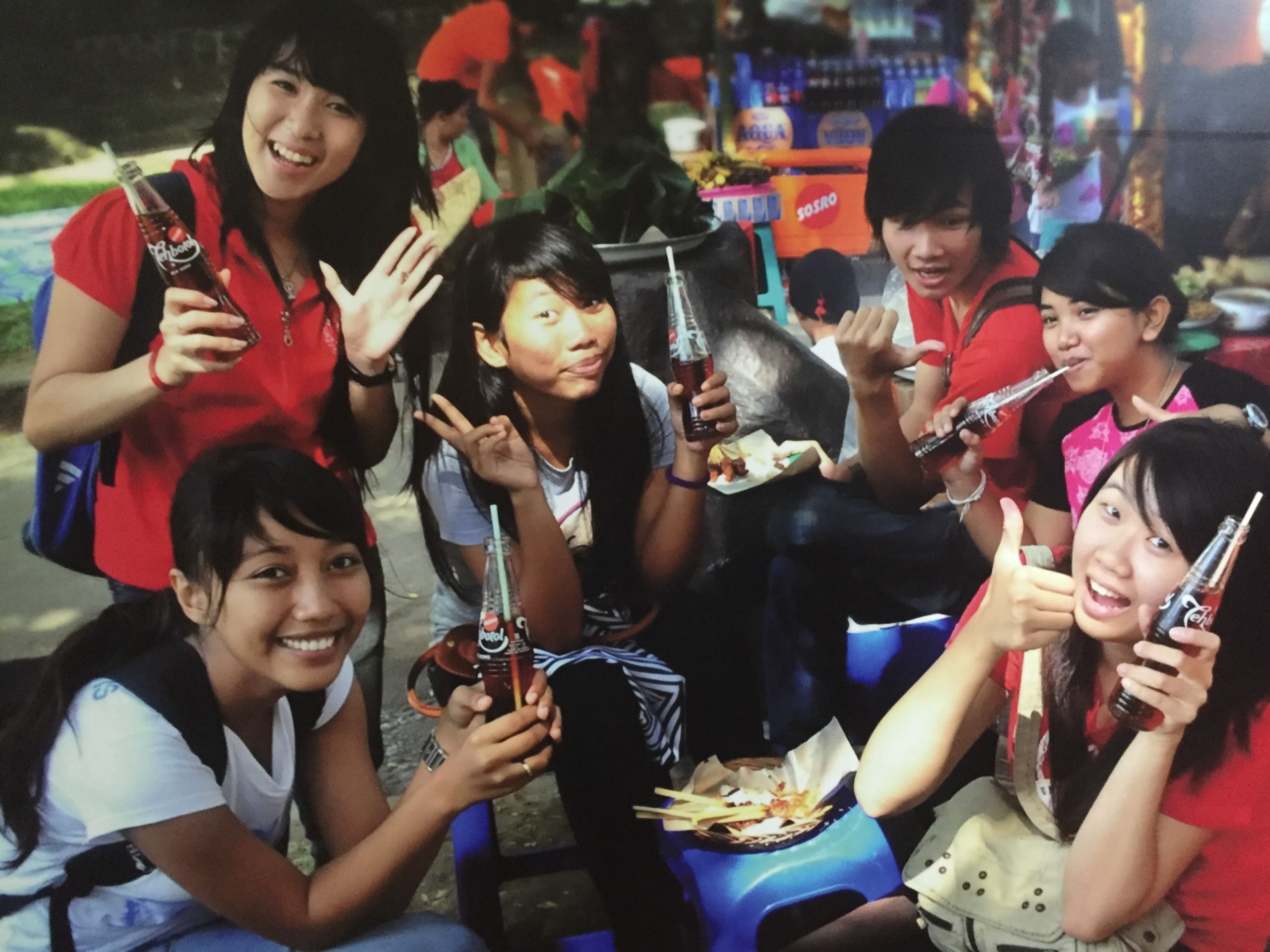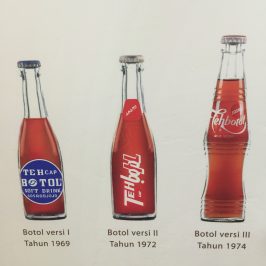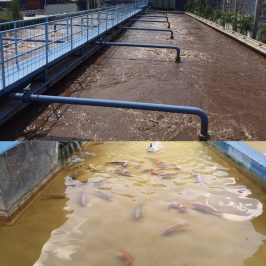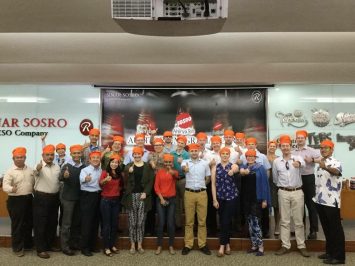Bottleneck – our visit to Sinar Sosro
11/05/2016

TEA TEAM BLOG (Anne, Aleks, Robert)
Visit to Sinar Sosro makers of sweet tea, Indonesia’s most popular drink

Arrival
We got to the bottling plant and were welcomed with bottles of fruit tea. After a quick explanation of the history of tea (did you know top world consumers are Turkey and Ireland!) we went up to the main presentation room. Everyone was welcomed, Benny gave a speech, we got a Presentation of Sisar Sosro by Business Development Manager Agus Malyono. Also we watched a video about tea and all (7) plantations in Java. Then we saw an amazing video of tea packers, as Rob says “packing tea faster than a pheasants son picking pheasants till the pheasant’s picking’s done”.

General facts about Sosro production
2.873 employees (82% women and 18% men)
10 factories
Average capacity of a bottling line 25000 / h, the best are doing 60000/ h,
Factory runs on three shifts, no work on Saturday and Sunday.
Inspired by the tea picking it was time to see the operation…
Inside Bottling Plant
We couldn’t take photos (besides this one) but it was really fascinating. The first thing you noticed was the heat. At first we thought this was just the ambient temperature, but it soon became apparent that you need very hot conditions to clean glass bottles and add hot tea. We sort of went the wrong way round, but started seeing the full plastic bottles packed in to cardboard boxes. Then it was on to the glass. Before getting to the plant we had taken guesses on the % of bottles that would be returned, guesses varied from 7 to  92%. As soon as we entered the glass area it was clear that Chris’ 7 % would not be the winning guess. We saw the bottles arrive, lined up on a conveyor built that sorted them through to rows of four. 12 of the rows were then pulled up by what looked like an extended version of a ten pin bowling machine and then transferred to another conveyor to be cleaned. The machine was really impressive, but there appeared to be only one, if there was a problem with the containers entering the system then you really were looking at a bottleneck in more ways than one. We walked on and saw the newly washed bottles traveling on to be filled with new freshly made, delicious (if a bit sweet) tea. The full bottles were very hot (bottled at a temperature of 98C), and contained further on, we guess to have a label and lids going on, but we didn’t see this, it was time to meet the fish!
92%. As soon as we entered the glass area it was clear that Chris’ 7 % would not be the winning guess. We saw the bottles arrive, lined up on a conveyor built that sorted them through to rows of four. 12 of the rows were then pulled up by what looked like an extended version of a ten pin bowling machine and then transferred to another conveyor to be cleaned. The machine was really impressive, but there appeared to be only one, if there was a problem with the containers entering the system then you really were looking at a bottleneck in more ways than one. We walked on and saw the newly washed bottles traveling on to be filled with new freshly made, delicious (if a bit sweet) tea. The full bottles were very hot (bottled at a temperature of 98C), and contained further on, we guess to have a label and lids going on, but we didn’t see this, it was time to meet the fish!

Water cleaning
We left the bottling plant, passed a couple of very busy forklift trucks (2.5T Komatsu, Rob sadly observed) and soon found ourselves outsider in some ponds full of fish. Was this a beautiful park full of fish, for the staff to relax during their breaks? No, it was actually a fundamental part of the whole operational process as this was for cleaning up wash and spill water from the process. We saw a series of pools of water, with different levels of cleanliness, most contains a number of very long tailed fish. The “tails” turned out not to be tails…. However these were no ordinary pisceans, they were Goldfish and Koy and they operated like canaries looking for gas in a coal mine. Just as those poor birds would be sacrificed at the first smell of gas, in the same way a dead fish meant dirty water. This water is used for outdoor washing. Water for production comes from a well deep down and goes through a purifying and filtering process before going to finished products.

Questions and Answers
After the tour we were offered another drink (guess what!) and then it was time for the questions. Mr. Yuwono was very entertaining and informative and lead the answers. We learnt that the % of plastic bottles has risen from nearly nothing 10 years ago to approximately 30% now. We found out that 50% of trucks are owned by the company and we found out that drivers are paid for the level of deliveries and empties returned, but the key question was: what % of glass bottles are returned? The answer: 90-92%, the winner: Becky. After the emotion of the Q&A Benny and Denyse thanked our hosts, gave them a prestigious Cranfield Globe and then it was time for lunch.

Lunch
We had a delicious variety of Indonesian food, then it was time to pick up a present from our very generous hosts: a clock, a notebook, bottles of tea, boxes of tea and tins of tea – amazingly generous!
Then we went back to the bus and the most prestigious tea related event since the sinking in Boston harbor was over!
Greetings from our blogging Dream Team: Rob, Anne and Aleks

Categories & Tags:
Leave a comment on this post:
You might also like…
From nature walks to neural networks: My journey in Applied AI at Cranfield
Hi, I’m Ebru K and choosing a postgraduate degree is about more than just picking a subject; it’s about choosing where your future begins. As an international student from Turkey, I ...
Leading With Heart: My Journey as Cranfield Student Association President by Summer Yan
When I first arrived at Cranfield, I had no idea that one year later I would be standing at the heart of our student community, serving as President of the Cranfield Student Association (CSA). ...
Creating and using constituent lists in Datastream
Whether you're analysing industry performance, or comparing company financials, Datastream is a powerful tool. One of its most useful features is the ability to work with constituent lists — collections of companies grouped by index, ...
Landing at Cranfield: First-term experiences and life beyond the classroom
Starting a postgraduate course can feel daunting, especially if you’re new to the aviation industry. In this blog series, Adit Shah shares his journey on the Air Transport Management MSc at Cranfield. From first-term ...
Accelerating ambition: How Amelie Rohan engineered her future at Cranfield
In the world of high-performance automotive engineering, the gap between being a “fan” and being a professional is measured in more than just miles. It is measured in technical precision, hands-on ...
Study better and smarter in 2026
Happy new year! Now is the perfect time to reflect on your studies so far, thinking about what you’re doing well and where you need to focus a bit more attention. Getting back into ‘study ...






